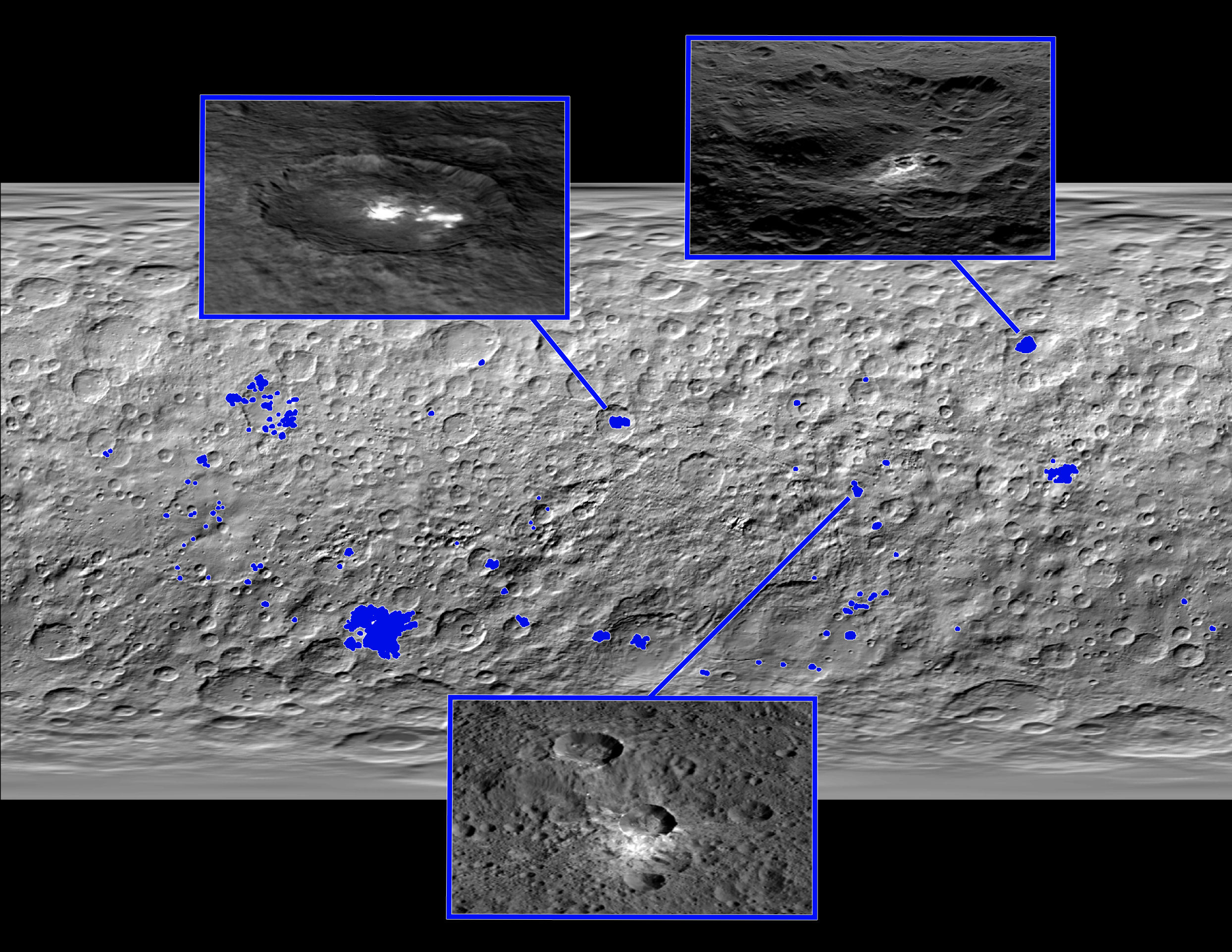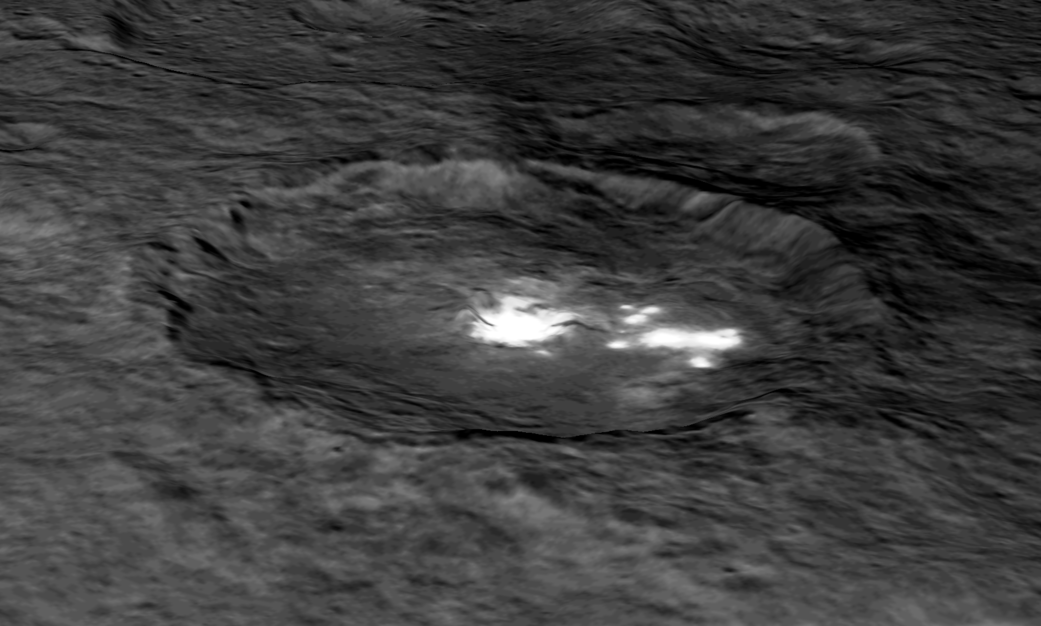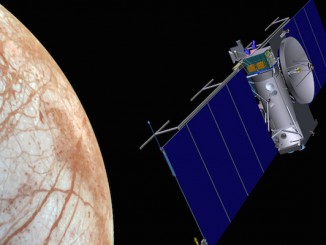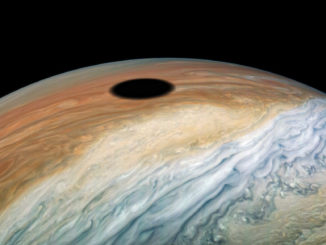The dwarf planet Ceres turns out to be a world with untold wonders, with vivid bright spots likely made of dried mineral salts and hazes apparently triggered by daytime heating, drawing a comparison to comets and strikingly differentiating it from neighboring bodies in the asteroid belt, according to the latest results from NASA’s Dawn mission.
The fresh findings on Ceres, detailed in two papers published in Nature magazine this week, offer new insights into the king of the asteroid belt, just as NASA’s Dawn spacecraft reaches its final planned science orbit 240 miles, or 385 kilometers, from Ceres’ cratered surface.
Dawn’s discoveries point to a landscape on Ceres marked with bright features that piqued the interest of scientists as the space probe approached the dwarf planet early this year, raising speculation among observers that they could be ice deposits or even evidence of cryovolcanism.
Scientists said Wednesday the most likely explanation is they are salts left behind as water ice exposed by asteroid impacts sublimated into space, a process in which volatile compounds like ice turn directly from a solid to gaseous state, skipping over the liquid phase.
“The most plausible interpretation of our results is that there is a mixture of ice and salts under at least some parts of Ceres’ surface,” said Andreas Nathues, principal investigator for Dawn’s framing camera from the Max Planck Institute for Solar System Research in Göttingen, Germany.
Researchers analyzing images from the Dawn spacecraft identified more than 130 bright areas on Ceres, according to a NASA press release.
The light reflected by the material making up the bright spots is more blue than light from other regions, scientists said, leading members of Dawn’s science team to conclude it is likely a type of magnesium sulfate called hexahydrite, similar to Epsom salt on Earth.
“Comparisons with a large variety of materials which we examined in the laboratory indicate that among other materials hydrated magnesium sulphates are to be found there,” said Martin Hoffman, a co-author on one of the papers in Nature with lead author Nathues.
Ceres is the largest object in the asteroid belt between the orbits of Mars and Jupiter, accounting for about a third of the belt’s total mass. Ceres has a diameter about the same as the width of France, and its surface temperatures range from minus 136 degrees to minus 28 degrees Fahrenheit (180 to 240 Kelvin) in sunlight.
“The global nature of Ceres’ bright spots suggests that this world has a subsurface layer that contains briny water-ice,” Nathues said.

Credits: NASA/JPL-Caltech/UCLA/MPS/DLR/IDA
Evidence is mounting that Ceres has water ice trapped on or just below its surface. The European Space Agency’s Herschel space telescope found a signature of water vapor at Ceres, but it could not resolve the water vapor’s source.
Collisions between Ceres and asteroids may have uncovered the underground layer of ice and salt in certain areas, and the salt remains after the ice weathers away.
“We are currently probably seeing remnants of an evaporation process exhibiting different stages in different locations,” Nathues said in a press release from the Max Planck Institute. “Perhaps we are witnessing the last phase of a formerly more active period.”
The most prominent bright feature on Ceres is in the pit of a 60-mile-wide (90-kilometer) crater named Occator. With sharp, distinct edges and a relatively smooth crater floor unspoiled by more recent impacts, Occator’s age is estimated by scientists to be about 78 million years, making it one of the youngest features on Ceres, according to NASA.
The brightest segment inside Occator crater lies within a central depression about 6 miles, or 10 kilometers, across and more than 1,500 feet (about 500 meters) deep.
“On some of our images, it is also possible to recognize a diffuse haze above the crater bottom,” Nathues said in a press release issued by the Max Planck Society. “Ice possibly evaporates from there and entrains small particles.”
The haze appears daily as sunlight illuminates the bright stuff, and scientists compare the reaction to a comet’s outgassing.
“The Dawn science team is still discussing these results and analyzing data to better understand what is happening at Occator,” said Chris Russell, the Dawn mission’s principal investigator at UCLA.
Another relatively young crater, named Oxo, also has some of the brightest features on Ceres.

The observations of Ceres show widespread water ice survived in the asteroid belt, much closer to the sun’s warming rays than the famous icy moons of Jupiter and Saturn.
A separate paper published in the journal Nature this week raises questions about the origin of Ceres.
Data from Dawn’s visible and infrared mapping spectrometer, a sensor that can tease out the chemical makeup of Ceres’ surface, indicate ammonia-rich clays dot the dwarf planet.
“Ammonia ice by itself would evaporate on Ceres today, because the dwarf planet is too warm,” NASA said in a statement. “However, ammonia molecules could be stable if present in combination with (i.e. chemically bonded to) other minerals.”
“The presence of ammonia-bearing species suggests that Ceres is composed of material accreted in an environment where ammonia and nitrogen were abundant. Consequently, we think that this material originated in the outer cold solar system,” said Maria Cristina De Sanctis, lead author of the study, based at the National Institute of Astrophysics in Rome.
It is unclear whether Ceres itself formed in the outer solar system, or if the material was transported to the asteroid belt and deposited on the dwarf planet.
Dawn’s mission, which began with a launch from Earth in 2007, then visited the giant asteroid Vesta in 2011 and 2012, will continue into the first half of 2016. High-resolution imaging, mineral and chemical mapping, and gravity observations are planned from the spacecraft’s final science orbit.
Email the author.
Follow Stephen Clark on Twitter: @StephenClark1.



